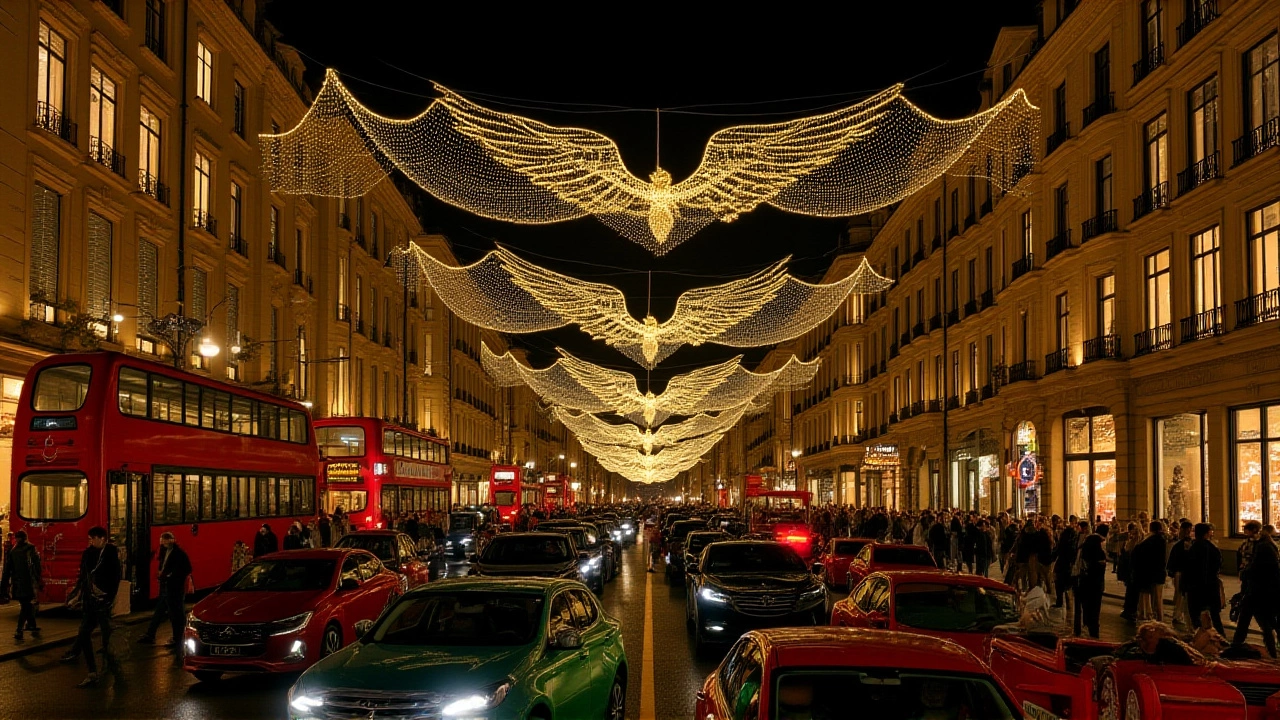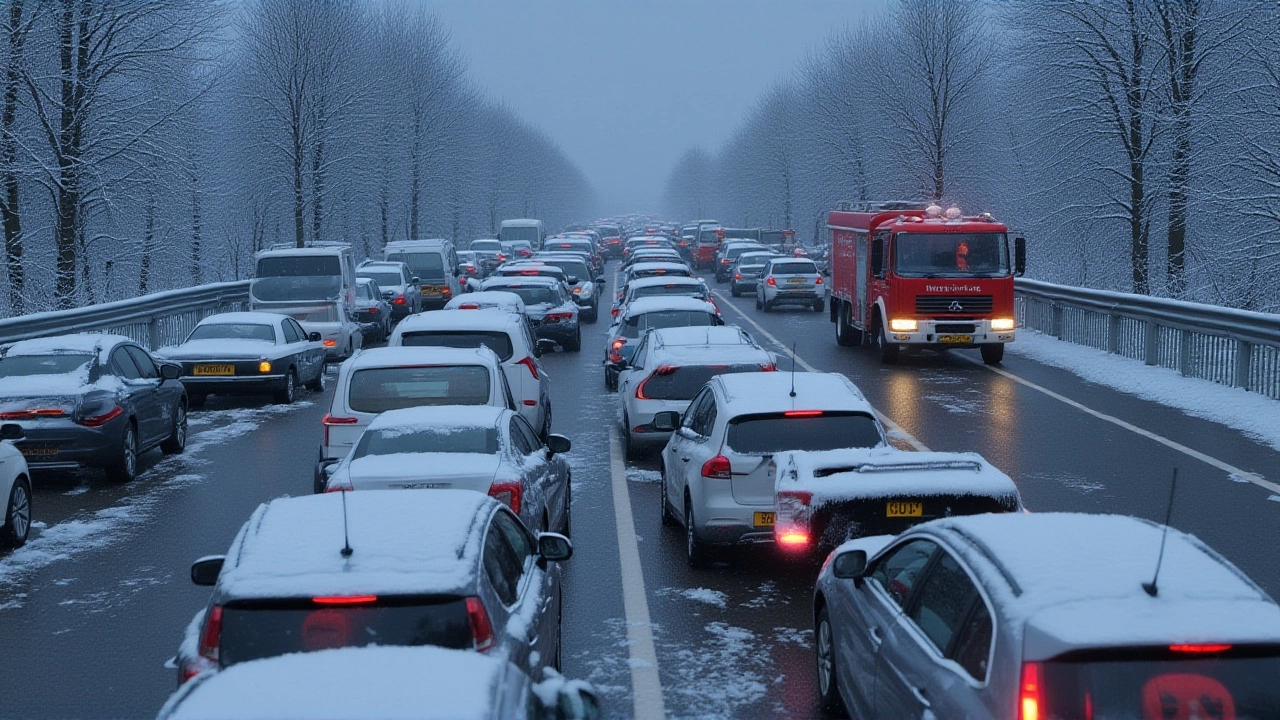Christmas 2025 in the United Kingdom may bring more damp than dazzling snow, despite lingering hopes for a white holiday. On November 26, 2025, meteorological analyst Brian Gaze of The Weather Outlook released a speculative long-range forecast suggesting most of the UK will see above-average temperatures on December 25, with snow confined — if at all — to the Scottish mountains. His analysis, drawn from the Global Ensemble Forecast System (GEFS) and European subseasonal models, paints a picture of a weak but wobbly winter pattern, not a frozen spectacle. The twist? A lurking wildcard: a potential sudden stratospheric warming event that could flip the script entirely.
What the Models Say — and What They Don’t
Gaze’s YouTube breakdown, viewed by thousands of weather enthusiasts, showed GEFS data indicating an 850 Hectopascal temperature anomaly favoring warmer-than-average conditions across nearly all of the UK. The darker pink shading on his charts — a visual shorthand for warmth — stretched from Cornwall to the northeast coast. "Snow on Christmas Day would be very unlikely," he said at timestamp 516, "apart from maybe the Scottish mountains." That’s not a guarantee, but it’s the most likely outcome under current modeling. The pressure patterns tell a similar story. A high-pressure ridge forming over northeastern Europe would push the UK onto the colder northern flank of a shifting jet stream — a scenario that *could* allow sleet or snow to sneak in. But Gaze emphasized these are "fluctuations," not a settled pattern. "It wouldn’t rule out colder days," he noted, "but we’re not seeing the kind of deep Arctic air mass that would make snow stick." Meanwhile, the Met Office — the UK’s official weather service headquartered in Exeter, Devon — has a much shorter forecast window, extending only to December 23, 2025. Their current outlook: wet in the south, drier in the north. No mention of snow. That’s not an oversight. It’s standard. Long-range forecasts for specific holidays are notoriously unreliable beyond 10 days.The White Christmas Myth — And the Real Definition
Here’s where expectations collide with reality. The Met Office defines a "white Christmas" as one single snowflake falling anywhere in the UK on December 25 — verified by official observers. Not snow on the ground. Not a flurry in London. Just one flake, somewhere. Since 1960, about half of all Christmases have met that minimal threshold. In 2022 and 2023, snow fell in parts of Scotland and northern England, but melted before settling. Technically? White Christmases. Practically? Not the ones you remember from childhood. Widespread, settled snow? That’s rarer than a perfect score in a snowball fight. Only four times since 1960 has the UK seen snow lying across large areas on Christmas Day. The last was in 2010. Climate change has tilted the odds: winters are milder, rainfall more frequent, and snowfall more fleeting.The Wildcard: Sudden Stratospheric Warming
But here’s the plot twist. On November 19, 2025, Aidan McGiver, a Met Office meteorologist in Exeter, flagged signs of a possible sudden stratospheric warming (SSW) event — a rapid spike in stratospheric temperatures by up to 50°C. It sounds absurd, but it’s real. When the stratosphere warms, it disrupts the polar vortex, sending the jet stream into chaos. The result? Cold Arctic air plunges southward. "It doesn’t always mean extreme weather," McGiver cautioned in a YouTube video. "But it increases the chance of a cold snap in the UK by 70 percent — up to two weeks later." That timing is critical. An SSW event now could mean bitter cold hitting the UK around Christmas Eve or Christmas Day. Think back to 2018’s "Beast from the East." That SSW triggered temperatures as low as -14°C, closed schools, halted trains, and knocked out power. The Met Office’s November 26 statement acknowledged the "clash of Arctic and North African air masses" and warned of "potential for further cold spells." It’s not predicting it — but it’s watching closely.What’s Next? The Waiting Game Begins
Right now, forecasters are in a holding pattern. The GEFS and GFS models show one path. The SSW indicators show another. The Met Office won’t issue a definitive Christmas forecast until mid-December. That’s when the 7- to 10-day window becomes reliable. Until then, it’s all probabilities. For families planning holiday travel, the message is simple: prepare for wet, not white. For those dreaming of a snowy Christmas, the hope isn’t dead — it’s just hanging by a thread. If the stratosphere flips, the UK could wake up to a landscape transformed. If it doesn’t? It’ll be another damp, drizzly December 25 — with maybe, just maybe, a single flake falling over the Cairngorms.
Historical Context: Why White Christmases Are Fading
Since records began in 1960, the UK has averaged a 50% chance of any snowfall on Christmas Day. But that number is misleading. The frequency of snow *falling* hasn’t dropped as sharply as the frequency of snow *staying*. Winters are warmer. Rain now replaces snow more often than not. Even when snow falls, it melts faster. The four years with widespread settled snow — 1981, 1991, 1995, and 2010 — all occurred during periods of stronger polar vortices and colder North Atlantic conditions. Those are becoming rarer. The Met Office’s own climate projections suggest a 20-30% decline in snowfall days across the UK by 2050. Christmas Day snow, once a nostalgic staple of postcards and carols, is becoming a relic of a colder past.Why This Matters Beyond the Holidays
This isn’t just about decorations and carols. A sudden cold snap in late December strains infrastructure. Power grids buckle under demand. Road maintenance budgets are stretched thin. Emergency services brace for accidents. Schools and businesses plan for disruption. Even a 70% increased chance of a cold snap means local councils need to be ready — not just for snow, but for the cascading effects: frozen pipes, delayed deliveries, canceled events. The unpredictability of winter weather in a warming world is a microcosm of larger climate challenges. We’re no longer living in a climate with predictable seasons. We’re living in one where extremes — heatwaves in June, snow in December — are becoming more common, even if they’re still statistically rare.Frequently Asked Questions
What’s the likelihood of a white Christmas in the UK in 2025?
Based on current models, the chance of any snow falling on Christmas Day 2025 is low — around 20-30% — and confined mostly to high ground in Scotland. Widespread snow is extremely unlikely unless a sudden stratospheric warming event triggers a late cold snap. Even then, snow sticking to the ground is rare; most "white Christmases" since 1960 involved just one flake, verified by official observers.
How does sudden stratospheric warming affect UK weather?
An SSW event warms the stratosphere by up to 50°C, disrupting the polar vortex and weakening the jet stream. This can cause Arctic air to plunge southward, increasing the chance of a cold snap in the UK by 70% up to two weeks later. The 2018 "Beast from the East" was triggered by an SSW, bringing -14°C temperatures, transport chaos, and widespread snow — a scenario still possible, though not guaranteed, for Christmas 2025.
Why do meteorologists say "snow is unlikely" when some forecasts show snow?
Long-range models like GEFS and GFS show broad trends, not precise outcomes. They can indicate a *possibility* of cold air, but not the exact timing, location, or intensity. Only when forecasts narrow to the 7-10 day window do they become reliable. As of November 26, 2025, the models favor warmth — but the SSW risk keeps the door slightly ajar.
Has climate change made white Christmases less likely?
Yes. Since the 1960s, average UK winter temperatures have risen by about 1.2°C, reducing snowfall frequency and duration. While snow still falls on roughly half of Christmases, it’s increasingly transient — melting before it settles. Only four times since 1960 has the UK seen widespread snow on the ground. Climate projections suggest this trend will continue, making true white Christmases a rarity by 2050.
What’s the difference between snow falling and a "white Christmas"?
The Met Office defines a "white Christmas" as one snowflake falling anywhere in the UK on December 25 — no need to stick or cover the ground. In 2022 and 2023, snow fell in parts of Scotland and northern England, meeting the official definition, but melted within hours. True white Christmases with snow lying on the ground have occurred only four times since 1960 — the last in 2010.
When will we know if Christmas 2025 will be snowy?
Definitive forecasts won’t be available until mid-December, when models enter their reliable 7- to 10-day window. The Met Office and The Weather Outlook will update predictions daily as new data comes in. Watch for signs of a confirmed SSW event between December 1–10 — that’s when the risk of a late cold snap becomes much clearer.
